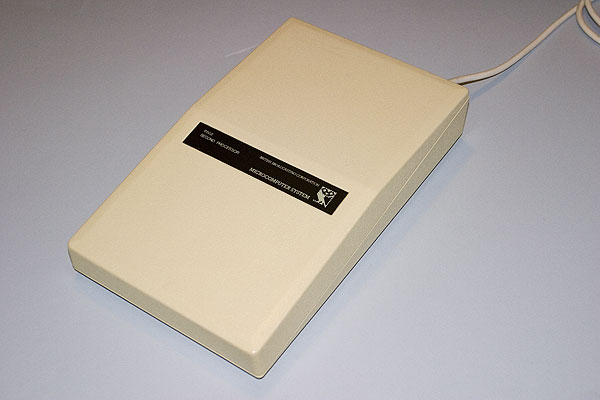6502 Second Processor
The 6502 Second Processor was the first piece of hardware to take advantage of Acorn's remarkable Tube interface, which allowed for the seamless integration of an additional processor with the BBC Model B (and later Master) hardware. As well as being the first BBC second processor to launch, in early 1984, it also introduced the much-loved case known to Acorn enthusiasts as the 'cheese wedge' which would later house other second processor systems as well as the Prestel and Teletext adaptors.
Hardware
Essentially the 6502 Second Processor is a computer system in itself which uses the BBC machine as a host for its input and output needs. At the core of the unit is a 3MHz 6502 processor and 64K of integral memory. The unit attaches to the Tube port on the underside of the BBC Micro via a short ribbon cable. The 6502 Second Processor was supplied with Acorn DNFS and Hi-BASIC ROMs.
Operation
The 6502 Second Processor requires the Tube software to be present in the host machine. For the Model B, this was supplied in the included DNFS ROM (the code was built in to the later Master Series' operating systems). With a 6502 Second Processor installed, the standard operating system and memory startup message is replaced by 'Acorn TUBE 6502 64K'.
On bootup the primary programming language interpreter is transferred via the Tube to occupy the Second Processor's memory. The Tube system allows the standard Model B's 32K of RAM to be devoted entirely to input/output tasks such as screen memory, filing system buffers and the like, leaving the Second Processor's on-board RAM free for program data. The supplied Hi-BASIC ROM is designed specifically for the 6502 Second Processor and allows 44K of space for BASIC programs.
Other BBC Micro language ROMs, including the standard BBC BASIC, can also be used with the 6502 Second Processor. Even these 'non-Hi' languages not specifically written to take advantage of the Tube functionality allow a still-impressive amount of space for program storage that far exceeds the capacity of an unexpanded Model B.
When running non-HiBasic, the extra memory can be utilised by relocating the BASIC variables or program code.
In addition, the additional 1MHz of the Second Processor functions to make programs run significantly faster - sometimes with almost double the speed - than on a standard single-processor system.
Applications
Since the 6502 Second Processor was released with an RRP of £199.99, its adoption was mostly restricted to professional users, and the catalogue of software designed especially for the unit was limited and mainly restricted to Acorn's own work.
Software known to be written specifically for the 6502 Second Processor includes:
- Level 2 and 3 Econet fileserver software
- Hi-View (special version of Acornsoft's View word processor allowing 47K of memory for text)
- Elite (enhanced version of the well-known space trading game with Second Processor support)
Some software would detect that is was running on the second processor and relocate themselves to take advantage of the extra memory. For example, later versions of View do this.
In theory, most software written for single processor systems that does not make low-level references to absolute memory locations can function on the 6502 Second Processor. Tube compatibility was one of the main reasons that Acorn encouraged users to write assembly language programs using the in-built OS subroutines (e.g OSBYTE, OSFILE) rather than acting directly on input/output registers.
